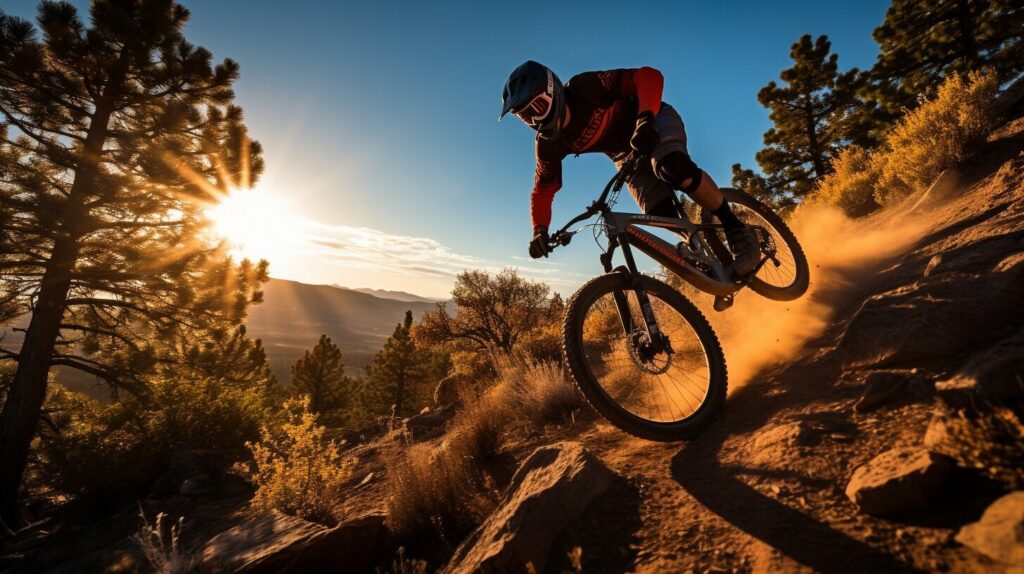
Mastering the Trails: A Comprehensive Guide to Mountain Biking Tips and Techniques
Mountain biking offers an exhilarating blend of adrenaline-pumping speed, technical challenges, and breathtaking scenery. However, navigating the diverse terrains and obstacles requires skill, technique, and a healthy dose of caution. This comprehensive guide dives deep into essential tips and techniques to help you conquer the trails, whether you’re a beginner taking your first ride or an experienced rider looking to refine your skills.
I. Fundamental Skills: Building a Solid Foundation
Before tackling advanced trails, mastering fundamental skills is paramount. These form the bedrock of your mountain biking ability and will significantly improve your safety and enjoyment.
-
Body Positioning: Maintaining a centered and balanced position is crucial. Keep your weight evenly distributed, avoiding leaning too far forward or backward. A slightly forward lean helps maintain momentum on climbs, while a more centered position is ideal for descents. Practice shifting your weight smoothly to maintain control.
-
Pedaling Technique: Efficient pedaling is key to maximizing power and minimizing fatigue. Focus on a smooth, circular pedal stroke, applying even pressure throughout the rotation. Avoid “mashing” the pedals, which can lead to loss of control and strain on your knees. Learn to utilize different pedaling techniques depending on the terrain, such as spinning a lighter gear on steep climbs or powering through tough sections in a lower gear.
-
Braking: Mastering braking is crucial for safety. Use both brakes, employing the rear brake primarily for slowing down and the front brake for controlled stopping. Avoid locking up the brakes, which can lead to loss of control, especially on loose surfaces. Practice controlled braking in various conditions to develop a feel for your bike’s stopping power. Learn to feather the brakes, applying and releasing them gradually to maintain control on tricky descents.
-
Cornering: Proper cornering technique is essential for smooth and efficient navigation. Look ahead and choose your line carefully, selecting the smoothest path through the turn. Lean your bike into the corner, using your body weight and subtle steering adjustments to maintain control. Maintain momentum by carrying your speed through the corner rather than braking hard before the turn.
-
Shifting Gears: Smooth and timely gear changes are vital for maintaining momentum and power. Practice shifting before you need to, anticipating changes in terrain. Avoid shifting under heavy load, as this can damage your drivetrain. Learn to use your rear derailleur effectively to adjust your cadence based on the incline and terrain.
II. Conquering the Terrain: Techniques for Specific Challenges
Mountain biking trails present a variety of challenges. Mastering techniques for these specific scenarios will greatly enhance your riding experience.
-
Climbing: Steep climbs require a combination of technique and physical fitness. Maintain a low gear, keep your cadence consistent, and stay seated unless the climb becomes too steep. Use your body weight to maintain traction, shifting your weight slightly back to prevent wheel slippage. Consider using a technique known as "climbing out of the saddle" on very steep sections for better power transfer.
-
Descending: Descents can be exhilarating but require careful control. Maintain a relaxed but alert posture, keeping your weight centered and your body loose. Look ahead and anticipate obstacles, adjusting your line as necessary. Use your brakes smoothly and progressively, avoiding abrupt stops. Learn to use your body weight to navigate obstacles and maintain balance. Consider practicing on less challenging descents before attempting steeper trails.
-
Obstacles: Roots, rocks, and other obstacles require precise technique. Look ahead and choose your line carefully, selecting the smoothest path. Use your body weight and suspension to absorb impacts, maintaining momentum through the obstacle. Avoid braking heavily over obstacles, as this can disrupt your balance and control.
-
Technical Sections: Tight turns, steep drops, and other technical sections demand advanced skills. Practice these sections slowly and methodically, focusing on precision and control. Use your body weight to maneuver your bike, maintaining a centered position and adjusting your weight as needed. Develop a feel for your bike’s handling in various conditions.
III. Essential Gear and Safety Precautions:
The right gear and safety precautions are essential for a safe and enjoyable ride.
-
Helmet: A properly fitted helmet is non-negotiable. Choose a helmet that meets safety standards and fits snugly, protecting your head from impacts.
-
Gloves: Gloves protect your hands from impacts and provide better grip on the handlebars.
-
Eye Protection: Eye protection shields your eyes from debris, branches, and insects.
-
Bike Maintenance: Regular maintenance is crucial for bike safety and performance. Check your brakes, tires, and drivetrain regularly.
-
Trail Etiquette: Respect other trail users, yielding to uphill riders and hikers. Stay on designated trails and avoid damaging the environment.
-
First-Aid Kit: Carry a basic first-aid kit for minor injuries.
-
Communication: Inform someone of your riding plans, including your route and estimated return time.
-
Appropriate Clothing: Dress in layers to adjust to changing weather conditions. Wear bright clothing to increase visibility.
IV. Practice and Progression:
Improving your mountain biking skills takes time and practice. Start on easier trails and gradually progress to more challenging terrain. Focus on developing your fundamental skills before tackling advanced techniques. Consider taking lessons from a qualified instructor to learn proper techniques and safety procedures. Regular practice will build your confidence and improve your abilities.
V. Beyond the Basics: Advanced Techniques
Once you’ve mastered the fundamentals, you can explore advanced techniques such as manuals, wheelies, and bunny hops. These techniques require significant practice and coordination, but they can add a new dimension to your riding. Consider watching instructional videos and seeking guidance from experienced riders to learn these advanced skills safely.
Mountain biking is a rewarding sport that offers endless opportunities for adventure and personal growth. By mastering these tips and techniques, and by prioritizing safety and responsible trail use, you can unlock the full potential of this exhilarating activity and enjoy countless hours of thrilling rides on the trails. Remember, consistent practice and a commitment to safety are key to becoming a confident and skilled mountain biker.



